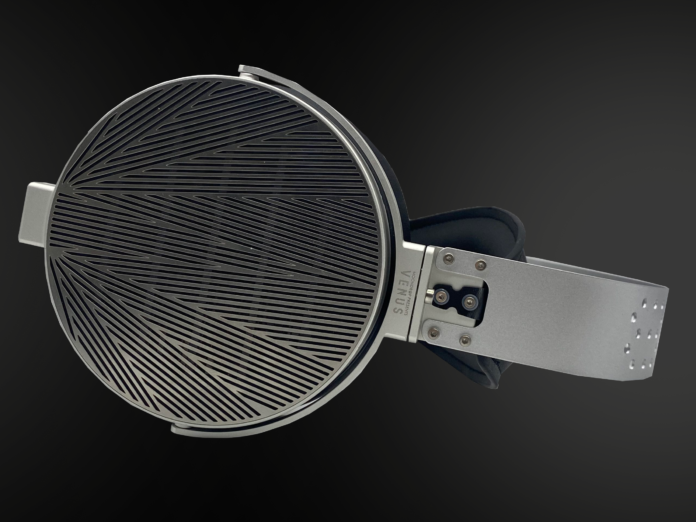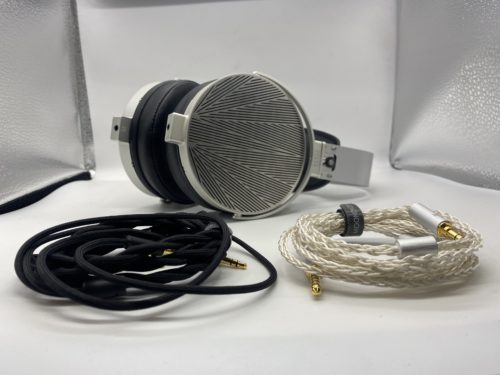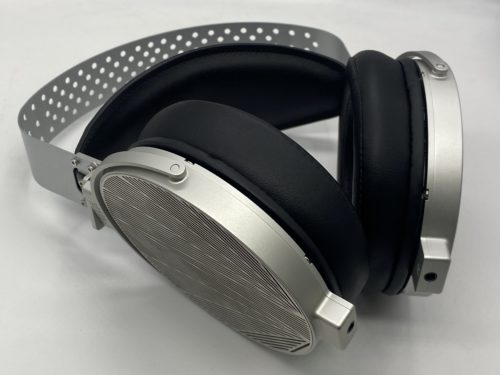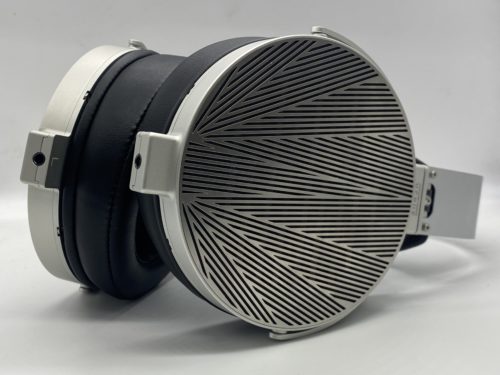Moondrop has made a ton of great IEMs, and now they’re branching out into audiophile over-ear headphones. They’ve come out swinging with the Venus, a new open-back planar headphone for $599, and it looks to ensure high expectations for its sound and hardware design. ThieAudio is another IEM company that found great success with their Wraith model, so let’s see if the Venus can reach the same heights.
What You Get
- Venus headphones
- 3.5mm cable
- 4.4mm braided cable
- Quarter-inch adapter
Look & Feel
For Moondrop’s first over-ear headphones, the Venus really showcases the level of care put into their build. The amount of high-grade materials found here is surprising. It isn’t always a given when dealing with headphones in this price range. Almost the entire makeup of the headphone, from the giant earcups to the rigid suspension headband is made up of aviation-grade aluminum alloy CNC. This build has similarities to the ThieAudio Wrait, as well as some higher-end Audeze headphones. It’s great that the Venus gives us a build like this for the price, and as an added benefit I don’t think it sacrifices much with the fit. While on my head, the Venus never felt too heavy, although I did think they could have used a better seal.
Design
The Venus possesses an immense 10mm planar driver with a sub-nanometer diaphragm. Its circuitry implements pure silver etched within it, ensuring a balanced distribution of vibration. In addition to this, the Venus also uses a secondary diaphragm is used to further balance the stress of the driver, impacting dynamic range performance as well as noise reduction. The stress of the diaphragm is also reduced by an array of N52 magnets which reduces split vibration. After listening to the Venus with multiple devices, It’s safe to say that they require a good amplifier. Any portable DAC/amp should do the track, but I will say that plugging directly into the 4.4mm input on the Fiio M11s didn’t sufficiently drive the Venus. I would highly recommend using the provided 4.4mm cable with the Venus, as it will supply you with the most optimal performance.
Soundstage
When you’re listening to the Venus, the soundstage makes you feel like you’re right at the center of everything. What it might lack in scale, the Venus more than makes up for in distancing. Every performance heard through these headphones feels like they’re naturally appearing from a specific origin that is not restricted by the boundaries of a stereo field. Its massively open headspace does an excellent job of communicating a spacious sonic environment through dimensional imaging and depth within all of the layers the Venus is willing to display.
There is nothing linear about how these headphones showcase its wonderfully wide and immersive soundstage. Certain instruments and effects have the opportunity to weave around you, and also appear above you. If you’ve ever listened to the HiFiMAN Edition XS or Ananda, the Venus will have a similar air to it. However, I think the Venus might go a step above those headphones with its exceptional spatial placement throughout the stereo field. The Venus makes you feel more entwined with ambient effects, as well as broader orchestrations. Slow building Post-Rock tracks from the likes of “God Is An Astronaut,” and cinematic film scores from Austin Wintory were huge standouts for what makes the Venus so strong in its soundstage.
Low End
Although the bass has some presence to it, the frequency content isn’t as flashy as other planar headphones. You’ll get some great clarity from the lows, and it will consistently present a clean bass tone, but it might not be as punchy as you might expect. However, there are instances of depth and texture, as the Venus is capable of some rumble. It can reach pretty low in the frequency range, but these headphones are still more reserved with their level of power for the bass. You can rely on it for good accuracy and tonal balance, but its theatrics are way less consistent.
Mids
The Venus offers a ton of room for the midrange to play around in, and it helps give certain performances some great detail. Even tracks that deal with busier instrumentals will have an easy time articulating themselves through the Venus. Each layer of detail is pealed back with equal levels of clarity throughout the sound signature. Notes have a crisp aural identity and feature excellent resolve with the attack and decay of each individual element. I think acoustic instruments will get the best results from the Venus in terms of resolution, but synths and pads should also come through with similar transparency.
Highs
Topping off the sound signature here is a wispy treble that combines enlightening detail with a smooth timbre. The highs extend the height of the sound significantly, with an airy tone that provides delicate hints of sparkle. Its resonance is controlled and not over-brightened in any way that could be considered harsh. This treble underlines almost every instrument and vocal with a soft crackle that excites the ears.
Summary
I think the Venus is an incredible first outing from Moondrop’s new over-ear line. The soundstage is everything you could want in a planar headphone for $599, and it sustains a crisp precision throughout its frequency response. It offers transparent instrumentals with close vocals that make up a fulfilling headspace that easily sucks you into its sonic environment. Then there’s the build, which goes above and beyond the ability of many headphones in this price range. These high-grade components are put together to forge a unique and durable build with an aesthetic flourish you’d expect from a company like Moondrop. The Venus has become a must-get mid-fi headphone, as long as you have a good amp to drive it.

The Moondrop Venus is available at Audio46.
MAJORHIFI may receive commissions from retail offers.












